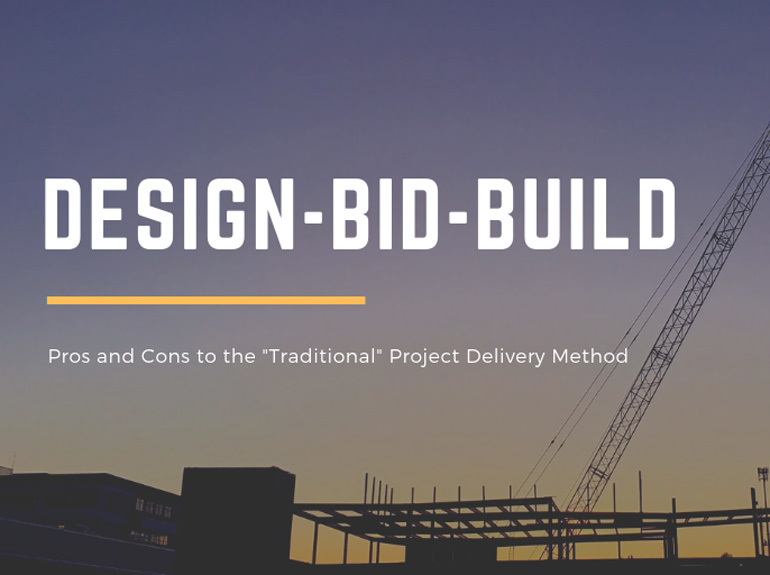Categories

Design-Bid-Build: Pros and Cons
By Dennis Check, AIA
Design-Bid-Build (DBB) is probably still the most prevalent delivery method used today, and perhaps the easiest to understand. It is often referred to as the traditional project delivery method. The architect signs a contract with the owner, then designs the project. The specifications and drawings (construction documents) are made available to contractors to bid the project. After a set bidding period, usually about one month depending on the size of the project, bidders submit sealed bids to construct the project based on the construction documents. Bids are opened, and the owner selects the lowest and best bid. Price and schedule terms are solidified, the “lowest and best” contractor signs a contract with the owner, and construction begins.
Pros to DBB
- Easily understood process
- Simple contractual relationships—architect and contractor each have their own contract with the owner
- With private entities, bidders can be pre-selected to ensure qualified, familiar professionals
- May yield the lowest construction price
Cons to DBB
- For a public client, it may be difficult to choose anyone but the low bidder (who may not be the most qualified or desirable)
- Usually the longest delivery method; leaves little room for project schedule acceleration
- Construction cost is not known (other than architect’s estimate) until bids are received
- DBB with separate prime contracts generally lacks project leadership and coordination
Factors to Consider with Design-Bid-Build:
Bidders may be general contractors (all subs are employed by the general contractor that contracts with the owner), or separate primes (each major discipline bids their respective scope of work, and each contracts with the owner). Until recently, the latter has been a requirement for public projects in the name of trying to achieve the lowest cost.
Public projects require that notice of the project and its bidding requirements be published on a strict schedule and in a public place. Public projects are generally open to all qualified bidders. Private projects may choose to allow only pre-selected bidders to participate.
The architect’s cost estimate is the established standard for bidders. If this advertised value is exceeded by the lowest responsible bid (usually by more than 10% for public projects), the project may have to be revised and re-bid.
Public projects generally require that the lowest bidder be selected; this may not always be the best bidder.
The architect and the successful bidder each hold separate contracts with the owner. Contractors are not part of the design of the project. Their participation begins after bidding and successful execution of a contract with the owner.
This is generally the delivery method that takes the longest to execute.
Use this method if:
- You are a private owner and able to allow only known, trusted bidders to bid the project
- You are used to this delivery method and you are comfortable with a methodical approach; your time constraints do not require early construction packages or the accommodation of an accelerated schedule
- You seek to minimize construction costs, and you are comfortable with a moderate amount of risk
Design-Bid-Build Project Examples
For an overview of other popular project delivery methods, click here. We’ll be featuring another popular project delivery method soon so follow us on Facebook, Twitter and Instagram to be the first to know when new posts are published!